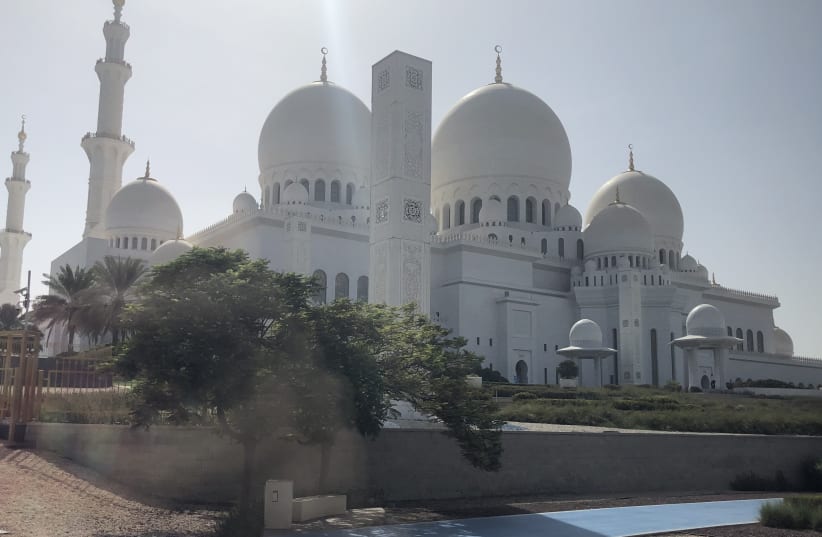Asked by an Israeli reporter whether stopping annexation in the West Bank to help the Palestinians was the real impetus behind the agreement, one official said it may have impacted the timing, but with years of steps toward normalization, it surely was not the reason.The UAE needs to do things in its own interest and not listen to others’ diktats, she said. We all agreed that this could give other countries the courage to take the plunge, as well, and debated whether Bahrain or Oman would be next.On the non-political side, two of my interlocutors told me they have Israeli friends from studies abroad and are excited to be able to visit them. They told me about friends who study Hebrew. One asked about hiking, and I told her all about the Israel Trail and water hikes in the North; she told me about camping in the UAE’s countryside.The impression we were given was that “warm peace” wasn’t just a slogan Prime Minister Benjamin Netanyahu was throwing around in a press conference.The next morning, as we handed our suitcases over to El Al security, heads of the local Jewish community showed up with Torah scrolls for morning prayers. It was a Tuesday, so a Torah wasn’t necessary, but they wanted to show us the inscription in Arabic on its covering, which honored prominent Dubai businessman Muhammad Ali Al-Abbas, “who inspired his friends and his country and his generation through his vision and personality.”When I said something about getting an impression of tolerance from the previous night’s event, Ross Kriel, president of the Jewish Council of the Emirates, reassured me that “it’s not just an impression.”THAT MORNING, we weren’t told the schedule for the day, but we were told that the reporters for American media outlets based in Israel were going to be separated from the Israelis. We quickly rooted out that CNN, NPR, AP and the others were going to an American Air Force base, and that White House Special Adviser Jared Kushner would be there with them, while we were going to the Sheikh Zayed Grand Mosque.The mosque was breathtaking, with mother-of-pearl flowers on the ornate floors and columns, massive chandeliers and colorful Persian carpets. The female journalists brought scarves to cover our hair, but we were given robes to wear to cover our arms and legs.Admittedly, it didn’t feel great to wear more layers in the sweltering heat, but it’s understandable to have to show respect at a religious site – just as I would in Israel – especially since we could wear what we wanted everywhere else.But when I found out the plan for the morning meant I would be doing the less “newsy” thing, it sparked mixed feelings. We were in Abu Dhabi to work, not to tour, so it was frustrating. But it was also exciting that in less than 24 hours in town, we would get to see such a famous and beautiful site.It was at that point that it clicked for me what the government of the UAE, which organized these tours, wanted to show Israelis via its media. Between leaving defense delegation meetings for another time, the Louvre’s interfaith emphasis, a dinner with friendly locals and a visit to the Grand Mosque – a religious site and one of the top tourist sites in town – it was very clear.They wanted to try to make peace between people. They wanted to show us a positive view of what they are all about: their hospitality to foreigners and tolerance of other religions.Of course, we all know that the UAE is not a democracy and that tolerance is at the will of Crown Prince Mohamed bin Zayed.SOON AFTER visiting the mosque, we got an honest answer from a tour guide at Qasr Al Hosn, an 18th-century fortress turned history museum. Asked what she thinks about ties with Israel, she said, “I trust our leaders to make the right choice.” Asked what people on the street think of the deal, she said, “We follow our leaders blindly.” And then a higher-up shushed her, saying she’s not a spokesperson.The visit to Qasr Al Hosn was a pleasant surprise, since its director Salama Al Shamsi had sat next to me at dinner the night before. It was interesting to see artifacts from when Abu Dhabi was a fishing village with an economy relying on pearling. The museum, open since 2018, was very modern and beautifully designed, like much else in the UAE.Qasr Al Hosn also gave some historical context to the local diplomatic culture, highlighting an emphasis on diplomacy.Sheikh Zayed the First, Abu Dhabi’s leader in the late 19th century, “knew there was more to the success and security of the community than strength of arms,” one sign read. Under his leadership, “Abu Dhabi thrived, becoming the most powerful, prosperous and respected of the coastal states.”And that seems to be the way the UAE operates and thrives to this day.During the historic visit by a US-Israeli delegation to the #UAE, officials gathered at @LouvreAbuDhabi to discuss how civilizational and cultural ties bind nations and the new age of cooperation and exchange to come.@admediaoffice #UAEIsrael #AbrahamAccord pic.twitter.com/xskD0lMJEr
— حسن سجواني Hassan Sajwani (@HSajwanization) September 1, 2020
The Emiratis’ message: Peace between the people
REPORTER'S NOTEBOOK: A country without a free press is not accustomed to Israeli journalists’ chutzpah and demands for radical transparency at all times.
